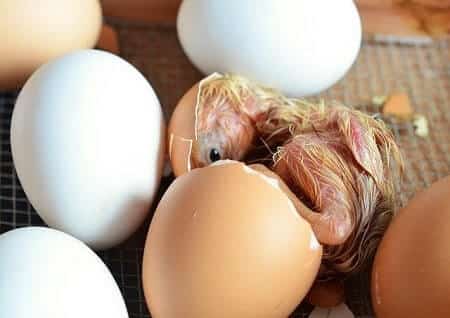Ever wondered how chicks - and other animals that hatch from eggs - crack open and break their eggshells so they can enter the world? I know I did, so here’s how they do it!
What is an egg tooth? An egg tooth is a small, sharp horn-like growth on the tip of a newborn chick’s beak. They use it to crack and break through the surface of their egg during hatching so they can break free.
Table of Contents
Why Do Chicks Have an Egg Tooth?
An egg tooth is one of those design features that blows the mind when you think about it.
A baby chick’s claws and beak are not strong enough to help them break out from their egg. So, they have a hard, sharp “tool” on the end of their breaks called an “egg tooth” which is strong enough to break the eggshell.
They spend hours tapping the shell with this tooth when they’re ready to hatch. Forming small cracks, which become larger cracks, and eventually split the shell and push the cap off.
Most other egg-laying animals also have an egg tooth to enable them to hatch too. Most birds have them, snakes and lizards have an egg tooth, and crocodilians have a hard piece of skin on their snouts that perform the same function.
How Do Chickens Break out of Their Eggs?

Generally speaking, chickens have a 21-day incubation period. Some can hatch a day or two either side of this timeline, but 21 days is the expected hatch day.
Around day 17, a chick will use their egg tooth to break the air cell inside their egg. This releases additional oxygen and enables them to exercise their respiratory system.
Three days or so later the chick will “pip” their shell to let some more oxygen in. “Pipping” means they are making the first cracks in the outer shell with their tooth.
This is the exciting moment for us waiting for our chicks to hatch as we can see evidence that they’re starting to break out.
They may pip the shell a few times before they go ahead and start to “zip” their shell. Zip is the word used to describe the line they make with their tooth to open up their shell and enable them to hatch out into the world.
It’s kind of like creating a zipper across the shell. This is usually past the halfway mark towards the cap of the shell. When the zip is long enough for the cap to come off, the chick will push that part of the shell away.
They will then hatch from the egg! And it’s all due to that special little tool on the end of their beaks called the egg tooth.
What Happens to the Egg Tooth?
Once a chick enters the world, they no longer need their egg tooth. For most chicks, it will simply drop off within 3-4 days after being outside of their egg.
In Summary - What Is an Egg Tooth?
You now know everything there is to know about why chicks have an egg tooth, how they use it to break free from their egg, and what happens to it afterward.
There are so many fascinating things about chicks and chickens. For me, this is one of the more interesting facts as it explains how chicks have a design feature with a specific purpose.
Here is a video where you can clearly see a chick using their egg tooth to break out of an egg. Pretty amazing footage!
Related Questions
Do Ducks Have an Egg Tooth?
Yes, ducks do have an egg tooth. Just the same as chickens, ducks have a small, sharp appendage on the tip of their beaks. They use this to peck away and break their egg.
Do Turtles Have an Egg Tooth?
Yes, turtles have what is commonly called a caruncle or an egg tooth to enable them to break their egg and hatch. It’s located on the top of their jaw and can take a few months to disappear.
Did Dinosaurs Have an Egg Tooth?
There is no conclusive evidence to confirm that dinosaurs did or didn’t have an egg tooth. Scientists do know that it took them 3-6 months to hatch, and the best guess is that they would have had an egg tooth of some sort.




